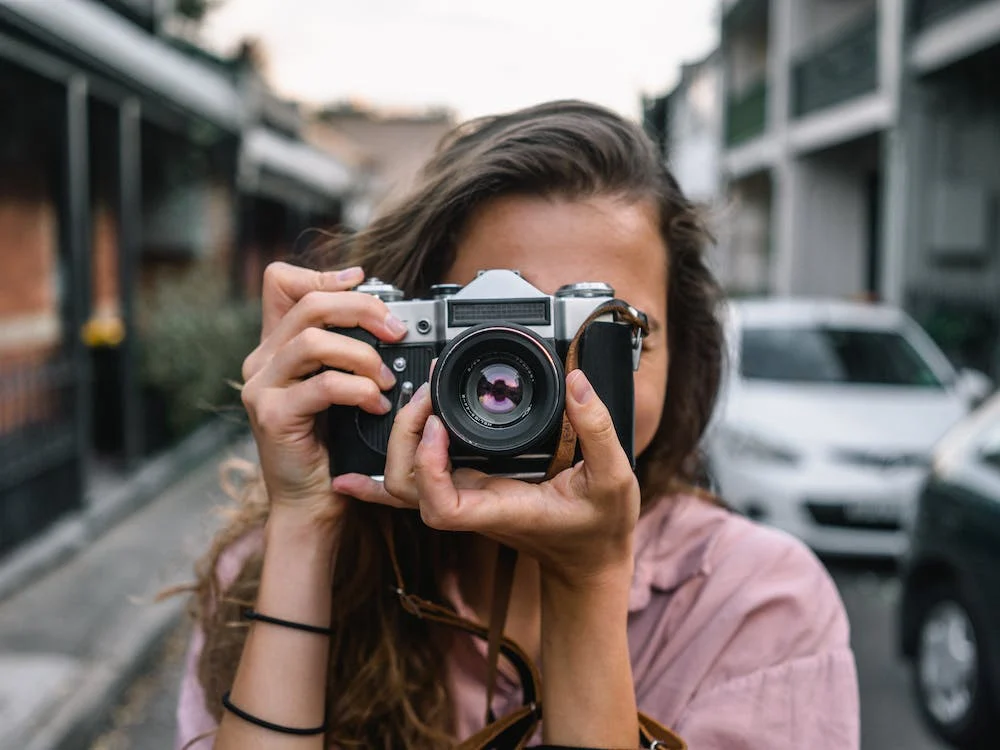Digital Cameras
Digital cameras are also known as digicam, immediate video and image viewability is one of the few key advantage of using a digicam.
Digital cameras are integrated with a wide range of digital devices, ranging from personal digital assistants (PDA) and mobile phones to the Hubble and Webb Space Telescopes.
Digital photography is adaptable and compatible with email, CD/DVD, TV and computer monitors, the Web and may be stored on a PC. Some digital cameras have a built-in GPS receiver, which is used to produce geotagged photographs.
A digital camera uses an electronic image sensor to create still photographs and record video. The optical system of a digital camera works like a film camera, in which a typical lens and diaphragm are used to adjust electronic image sensor lighting.
Digital cameras equip amateur and professional photographers with multiple automated control functions. Advanced digital cameras facilitate manual control of most functions.
Different types of Digital Camera
Digital cameras come in an array of sizes, features and prices, including the following:
- Compact digital camera: Portable, easy to use and small with limited picture quality. Built-in low-power flash. Images are usually stored as JPEG files. Also known as a point-and-shoot camera.
- Digital single lens reflex camera (DSLR): Design is based on the single lens reflex camera. Exclusive viewing system that uses a mirror to reflect light from the lens via an optical viewfinder.
- Bridge camera: Shares some DSLR advanced features. Uses a fixed lens with a small sensor – similar to compact digital cameras. Uses live preview for image framing.
- Mirrorless interchangeable lens camera (MILC): Combines superior quality sensors with DSLR lenses. Introduced in 2008, the MILC is simple and compact because of its ergonomic design.
- Line scan camera system: Supports focusing mechanisms and usually contains a line scan sensor chip. Used by industrial applications to capture moving material images.
- Integrated camera: Built into multiple digital devices, including mobile phones, PDAs and laptops.
Choosing the Right Digital Camera for Your Needs
The easiest way to decide on which digital camera is right for you is to consider budget, size, features, and a few more things.
There are so many digital cameras on the market now with a plethora of features that it can be difficult to decide on which one is right for you, especially if you’re starting out in photography for the first time.
Here are the factors to consider in buying your digital camera:
Price
Probably the biggest factor when it comes to picking your first digital camera is price. Photography is an expensive hobby to get into, and it’s wise not to spend too much money on your first camera. There are a few reasons for this. The first is that you may find that photography isn’t right for you, so the initial outlay of money sits in a box unused. There’s also the fact you may find photography difficult at first, learning all the settings and rules, but then soon realize that you’ve outgrown the camera and need something with more features. That’s also true of photographers who discover they’d like to concentrate on one area of photography with specific or specialist equipment that may only be available on certain cameras.
Size and Weight
Next is the physical size of the digital camera you want to buy. At this point, it’s worth heading into a shop to try out a few cameras in person. Most photographers will tell you that they’ve opted for a specific camera brand or model because of how it feels in their hands.
Generally, the lighter and smaller the camera, the more portable it’ll be and easier it is to travel with it. However, you might prefer to have something chunky, heavy, and legitimate-feeling in your hands, even if this means less moving around. Take note of how the buttons are laid out on the camera as well as its size. Smaller cameras will have less space for buttons and switches and therefore rely on menu screens within the camera to alter settings, something that can get frustrating quite quickly.
Lens Systems
In its simplest form, there are two types of lens systems used on digital cameras: fixed or interchangeable.
Fixed lens systems have just one lens that can’t be removed from the camera body, so you’re stuck with whatever the camera manufacturer has decided to build the camera with, whereas interchangeable lens systems open up a world of possibilities when it comes to shooting different types of subjects.
Fixed lens cameras may have prime lenses (which cannot zoom in or out) or zoom lenses (which can). Prime lenses are typically smaller, lighter, and can occasionally be sharper and more detailed than zoom lenses due to the simpler manufacturing process, but zoom lenses offer greater flexibility when it comes to composition and suitability for different types of photographic subjects. Many fixed lens cameras such as point-and-shoot or bridge cameras come with zoom lenses that range from wide-angle to telephoto ranges, meaning wide vistas and close-ups of far-away subjects are both possible.
Digital Type
There are two popular types of digital cameras on the market: the mirrorless and DSLR.
Digital single-lens reflex cameras (DSLRs) are slowly being phased out in place of mirrorless cameras. The main advantages mirrorless cameras have over DSLRs are their smaller form factor, lighter weight, have more recently developed and refined lens mounts, feature in-body image stabilization (IBIS) much more often than DSLRs, and have electronic viewfinders.
So why would you want to choose one over another? DSLRs generally have optical viewfinders and, for traditionalists, this might be a deal-breaker. Electronic viewfinders are essentially small LCD screens in the viewfinder box and represent the digital image captured through the lens. The downside is that it’s a limited, digitally represented image and not the true scene in front of you. But the advantage of that is you can ramp up sensitivity in low light, making it easier to compose photographs and actually see what you’re about to capture rather than guess and check the rear screen.
In terms of future-proofing, mirrorless is the way to go, though DSLRs won’t disappear off the face of the earth for some time to come.
The Subject Matter
The subject matter you’re interested in photographing will have an impact on the type of digital camera you aim for. Whether it’s landscapes, portraits, weddings, events, products, macro subjects, wildlife, or sports each genre has its own requirements when it comes to feature demands and hardware essentials.
For example, it’s no use getting a point-and-shoot or compact camera when you want to shoot wildlife or sports photography, because you need to be able to change lenses based on the subject.
Sports athletes running around the field require the use of a long telephoto lens to get in close to the action as do birds in flights, so a point-and-shoot that zooms to a maximum of 50mm in focal length is next to useless. However, that type of camera might benefit someone who wants to do some holiday/travel photography capturing architecture and landmarks.
Resolution
The higher the number, the better the photo, right? Well, no. The more pixels you have to work with, then the more detailed large prints or reproductions of your photos can be, but it doesn’t equate to dynamic range, sharpness, or quality of images. Most beginner photographers fall into the trap of buying a camera based on image resolution, but you can pretty much discount that notion nowadays.
Digital cameras have been out long enough now that you can pick up any of them off the shelf, and they’ll all be good enough for you to use to print large, display online, or pretty much any other publishing style you need when it comes to image resolution.
There are a couple of reasons why you might want higher-resolution stills, though. For example, you may need to use an extreme crop on a photo but still retain enough detail for a clear image. For this reason, you might want something a bit beefier on the pixel count, but there’s also an argument that perhaps you should get closer to your subject or use a longer lens.
Stills and Video?
Are you only interested in stills photography or do you want to dabble in making some video content too? Bear in mind that unless you’re happy editing footage together or know someone who can do this for you, then you probably won’t be doing much video if your main aim is to have a camera for stills.
So, don’t go to town purchasing a camera that shoots high-resolution stills and 8K video footage in the raw format right away (unless you want to splash the cash.
If you want to play with video but mainly concentrate on stills, then you’re better off finding a camera that has focuses more on stills than video but still has some video capability.



